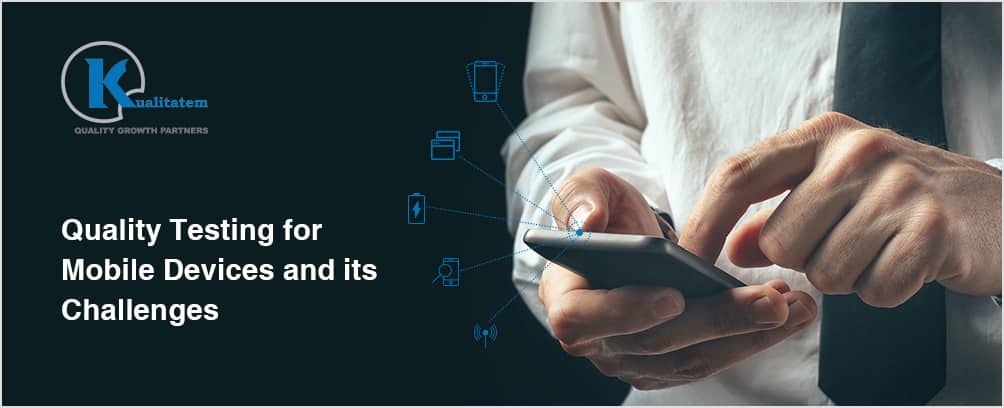Quality Testing for Mobile Devices and its Challenges

- August 17, 2016
- admin
Software Testing is a fast paced industry and it’s growing day by day. The whole world is moving towards mobile devices and that exposure is introducing completely new challenges in the testing world. More than 80% people around the world are using mobile devices to communicate; every end user wants a complete application. A little delay in response can make a bad impression and the end user may not use the application again. Hence rock solid quality testing is required for the mobile applications and websites before they are released. There are thousands of mobile devices out there in the market; due to such a large number of mobile devices and their variety, it has become a huge task for QA engineers to ensure the quality of the application. Some of the challenges that testers face during mobile application testing are as follows:
- Mobile device screen size
- Different types of OS
- Power consumption and battery
- Usability of application
- Connection types
Mobile devices are available in the market with different screen sizes. That means testers need to perform testing on various devices to make sure that all screen elements are available and accessible with various aspect ratios and screen sizes.
The second challenge that testers face during testing is that the mobile devices have different operating systems (OS) and different versions. Sometimes bugs appear on one version of OS but not on the other, that goes for both Android and iOS operating systems. It’s a real challenge for the testers to ensure that app would run smoothly across the different OS / OS versions; you never know what operating system your targeted user has on his device.
The third challenge is the battery life of the mobile devices. Most of the users like to constantly use their devices without charging them; it’s a natural thing. This requires a long lasting battery so that the user can continuously use the mobile device. Sometimes applications running in background consume battery without user’s knowledge. User wants applications that consume less battery. Testers need to make sure that applications’ power consumption is low and is developed using the best practices.
Usability of the app is another huge factor in the success of mobile app. Mobile devices have smaller screen sizes as compared to the PCs; so font size, click area, and readability are the other aspects needed to be tested. While conducting the testing, a tester has to pay attention to the size of the buttons and make sure that all the text is readable and information is displayed correctly.
Another challenging factor is the different connection types. There are quite a few standards for mobile data e.g. 3G, 4G and also for Wi-Fi. Also there are cases when a device is in flight mode. When the user is roaming around the connection type may change. Testing becomes more complicated as the client demands to test the application in real environment and on real places as well. Also it is vital to test the bandwidth usage since different levels of bandwidth carry / support different volumes of data.
These are some of the challenges that may occur while testing on mobile devices. With knowledge and expertise; testers can easily overcome these challenges.











